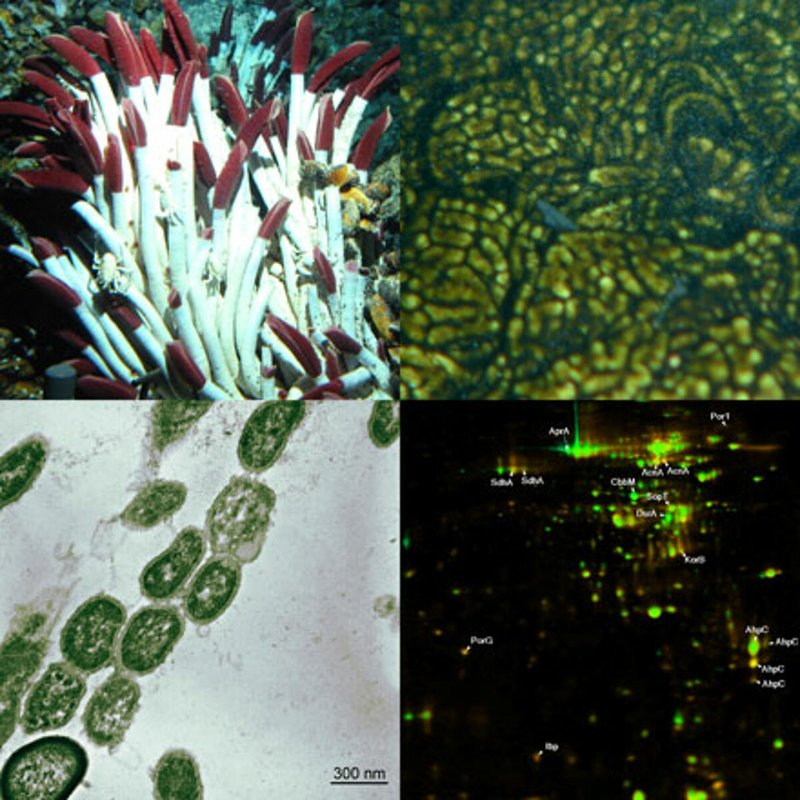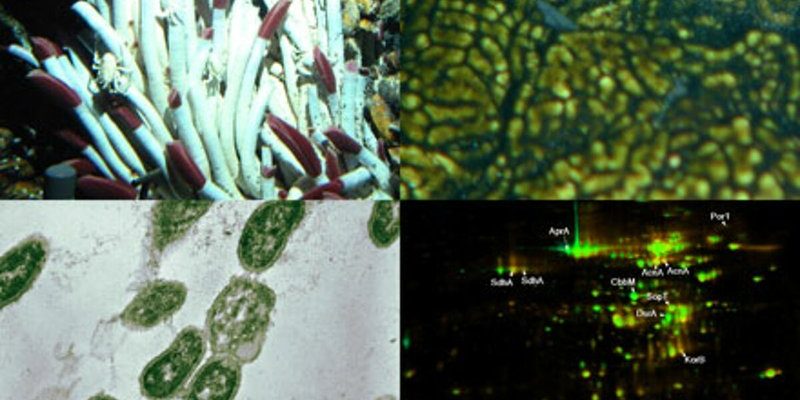
Riftia pachyptila doesn’t just live in isolation; it interacts with various microfauna that help define its ecosystem. In this article, we’ll dive into these interactions—what they look like, why they matter, and how each piece fits into the larger puzzle of life at the bottom of the ocean. So, grab your metaphorical diving gear, and let’s explore the dramatic and vibrant world of Riftia pachyptila!
What Is Riftia Pachyptila?
First things first, let’s break down who or what Riftia pachyptila really is. These remarkable tube worms can grow to be quite large, reaching up to eight feet long! They are found in the extreme environment around hydrothermal vents, where superheated water rich in minerals gushes from the ocean floor. You might think it would be a hostile place to live, but these worms have adapted beautifully to their surroundings.
The silky tubes they live in serve multiple purposes: they protect them from predators, help them absorb nutrients, and even house bacteria that provide essential energy through a process called chemosynthesis. In simpler terms, they create their own mini-oases in a world where most life forms would struggle to survive. This unique adaptation helps define their role within the ecosystem, making them a key player among other organisms living nearby.
Interactions with Chemosynthetic Bacteria
One of the most vital interactions for Riftia pachyptila is with chemosynthetic bacteria. These bacteria thrive on the minerals emitted by the hydrothermal vents and convert them into usable energy through chemosynthesis. Essentially, they’re like the farmers of this underwater garden, turning the harsh chemicals into something all organisms can benefit from.
Riftia pachyptila hosts these bacteria in special tissues called trophosomes, almost like tiny farms within their bodies. Here’s the thing: the worms provide the bacteria with a protected environment and a steady supply of chemicals, while the bacteria supply nutrients to the worms. It’s a perfect partnership, where both parties help each other thrive in a seemingly barren environment.
This interaction also lays the foundation for a broader community. When the bacteria flourish, it benefits not just the tube worms but also other organisms that depend on this organic material, creating a lively ecosystem.
Feeding Relationships and Nutrient Cycling
The feeding dynamics around Riftia pachyptila create a fascinating web of interactions. These tube worms mainly rely on the nutrients produced by their symbiotic bacteria, but they aren’t the only creatures that benefit. As bacteria die and break down, they release organic material into the surrounding water and sediment.
This organic matter becomes a buffet for smaller microfauna, such as protozoa and tiny crustaceans. These organisms play a vital role in breaking down and recycling nutrients, which can then be utilized by other species in the ecosystem. Imagine this process like a dinner party, where the tube worms get the first course, and the other guests nibble on the leftovers.
By cycling nutrients, these microfauna contribute to the overall health of the hydrothermal vent community and ensure that everyone has enough to eat. It’s this interconnected web of life that showcases the beauty of ecology, where even the smallest creatures play vital roles.
Predator-Prey Dynamics
Every ecosystem has its ups and downs, and Riftia pachyptila’s habitat is no exception. While the tube worms enjoy their symbiotic relationships, they’re also part of the food chain. Larger predators, like certain species of fish, rely on the worms and other microfauna for sustenance.
You might wonder how these prey-predator relationships affect the ecosystem. When fish feed on Riftia pachyptila, they’re not just taking away a single organism; they’re also influencing the entire nutrient cycling process. Fewer tube worms could lead to a decline in bacterial populations and consequently impact all the microfauna that depend on those nutrients.
This balance is crucial. If the predators become too numerous, it can seriously affect the worm population, leading to ripple effects throughout the ecosystem. That’s the dance of life—each step counts.
Mutualism with Other Invertebrates
Riftia pachyptila doesn’t exist in a vacuum. It shares its home with a variety of other invertebrates that often form mutualistic relationships. For example, certain species of shrimp and crabs live among the tube worms, providing cleaning services in exchange for protection.
These cleaning symbionts help keep the surface of the worms free from parasites and debris—a win-win situation. The shrimp get a safe haven to thrive in, while the Riftia pachyptila can focus on absorbing nutrients without worrying too much about pesky visitors.
Mutualism like this adds complexity to the ecosystem. When one species flourishes, it can positively impact its neighbors, leading to a more diverse and resilient community. This layer of interconnectedness is key in sustaining life around hydrothermal vents.
The Role of Riftia Pachyptila in Ecosystem Health
So, why does all this matter? The interactions and relationships of Riftia pachyptila contribute significantly to the overall health of hydrothermal vent ecosystems. By supporting chemosynthetic bacteria, engaging with other microfauna, and forming crucial relationships with invertebrates, these tube worms help maintain a balanced community.
When you start to look closely, it becomes clear that each interaction has a ripple effect. If something were to disturb the balance—like human activities or natural disasters—it could throw everything into chaos. This makes understanding Riftia pachyptila and its connections all the more important when it comes to conservation efforts and studying the impact of environmental changes.
We ought to care about these systems because they represent some of the most unique and least understood ecosystems on Earth. Protecting them means preserving not just Riftia pachyptila but the dazzling array of life that thrives in the deep sea.
Riftia pachyptila is more than just a fascinating creature; it’s a cornerstone of a complex web of interactions that defines life at hydrothermal vents. From its relationship with chemosynthetic bacteria to its interactions with various microfauna, every piece plays an essential role in maintaining the health of this unique ecosystem.
Understanding these dynamics not only satisfies our curiosity about life in extreme environments but also highlights the importance of conservation efforts. As we learn more about these ecosystems, we can better protect them and ensure that the vibrant interactions we’ve discussed continue for future generations to explore and appreciate. Plus, who wouldn’t want to marvel at the wonders of life beneath the ocean’s surface?

